Comprehensive Guide to Water Quality in New York State: Contaminants, Issues, and Water Filtration Solutions
by Ryan Moreau / updated February 3rd, 2025
New York State is renowned for its diverse water resources—from the pristine waters of the Catskills and Finger Lakes to the vast urban systems that serve New York City. Despite this abundance, the state faces complex water quality challenges due to aging infrastructure, industrial legacies, and agricultural runoff. In this comprehensive guide, we explore the common contaminants in New York’s water, regional water quality challenges, and effective filtration solutions. Start by using our Water Quality Tool to get a customized analysis of your local water conditions.

Overview of New York's Water Sources
New York's water supply is as diverse as the state itself. Key sources include:
- Great Lakes and Inland Waters: The Finger Lakes and other inland lakes provide water for both municipal use and recreation.
- Upstate Rivers: Rivers such as the Hudson, Mohawk, and Genesee are vital for drinking water, agriculture, and industry.
- New York City Watershed: NYC’s water comes from a protected watershed in the Catskill/Delaware region, renowned for its high-quality supply.
- Groundwater Aquifers: Many rural communities rely on groundwater, which can vary in quality depending on local geology.
Maintaining water quality across these varied sources requires vigilant monitoring and state-of-the-art treatment solutions.
Common Water Quality Contaminants in New York
New York’s water sources may contain a range of contaminants due to industrial activities, urban aging infrastructure, and agricultural practices. To better understand what might affect your area, start with our Water Quality Tool and then review these common issues:
1. Per- and Polyfluoroalkyl Substances (PFAs)
PFAs have been found in parts of New York, often linked to industrial discharges and the use of firefighting foams. Chronic exposure can affect thyroid function and immune response. For more detailed information, visit the EPA PFAs Tools and our PFAs Contamination Guide.
Water Filtration Options for PFAs: Reverse Osmosis Water Filters, Activated Carbon Water Filters
2. Nitrates
Agricultural runoff in upstate New York can elevate nitrate levels in groundwater, posing risks especially to infants. Excess nitrates are associated with methemoglobinemia, also known as "blue baby syndrome."
Water Filtration Options for Nitrates: Reverse Osmosis Water Filters
3. Arsenic
Natural geological formations in parts of New York contribute to arsenic in groundwater. Long-term exposure to arsenic can lead to serious health issues, including cardiovascular problems and cancer.
Water Filtration Options for Arsenic: Reverse Osmosis Water Filters
4. Chlorine and Disinfection Byproducts
Municipal water systems in New York often chlorinate their water, which can form disinfection byproducts like trihalomethanes (THMs). These byproducts are linked to increased cancer risks over time.
Water Filtration Options for Chlorine and Disinfection Byproducts: Activated Carbon Water Filters, Reverse Osmosis Water Filters
5. Heavy Metals (Lead and Copper)
Aging infrastructure in urban areas such as New York City has led to concerns over lead and copper contamination. Corrosion in old pipes can release these metals, posing risks particularly for children and pregnant women.
Water Filtration Options for Heavy Metals: Reverse Osmosis Water Filters, Activated Carbon Water Filters
6. Microbial Contaminants
While New York City’s water is rigorously treated, some private wells in rural areas may face microbial contamination from inadequate well construction or septic system failures.
Water Filtration Options for Microbial Contaminants: Reverse Osmosis Water Filters with UV disinfection systems can effectively neutralize bacteria and viruses.
7. Volatile Organic Compounds (VOCs)
VOCs, such as benzene and toluene, may be present in water sources near industrial sites or old manufacturing facilities. These compounds are linked to various health risks, including liver and kidney damage.
Water Filtration Options for VOCs: Activated Carbon Water Filters
8. Pesticides and Herbicides
Agricultural areas in upstate New York can experience runoff that carries pesticides and herbicides into local water supplies, potentially impacting both human health and aquatic ecosystems.
Water Filtration Options for Pesticides and Herbicides: Reverse Osmosis Water Filters, Activated Carbon Water Filters
9. Fluoride
Fluoride is added to municipal water in many parts of New York to promote dental health; however, excessive fluoride levels can sometimes occur naturally and may lead to skeletal fluorosis.
Water Filtration Options for Fluoride: Reverse Osmosis Water Filters
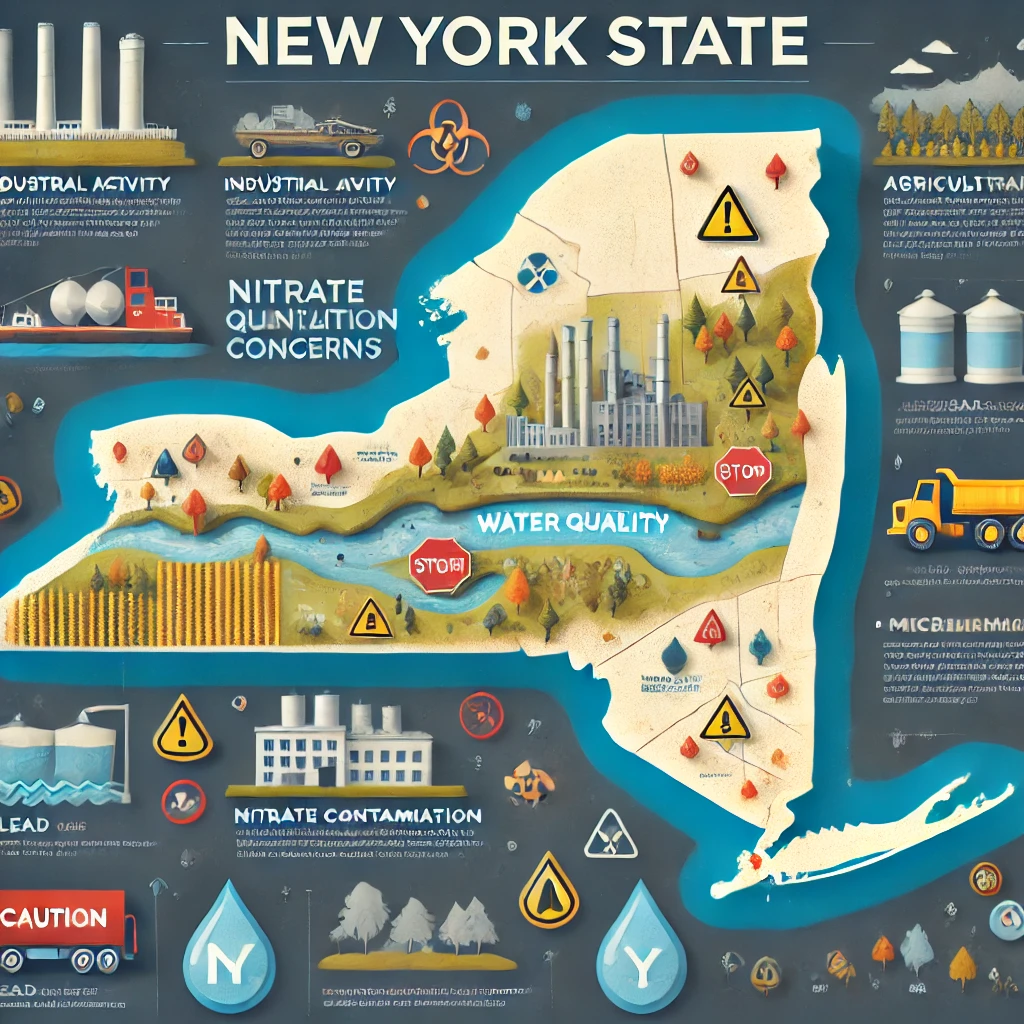
Regional Water Quality Challenges in New York
New York's diverse geography and industrial history contribute to various regional water quality challenges. According to the EPA and the New York State Department of Environmental Conservation (NYS DEC), key challenges include:
1. New York City: Aging Infrastructure
New York City’s water system, despite being one of the cleanest in the nation, struggles with aging infrastructure. Corroding pipes can lead to lead and copper contamination, prompting ongoing modernization efforts.
2. Upstate Industrial Areas
Regions in upstate New York with a history of manufacturing and industrial activity face challenges from legacy contaminants such as PFAs and VOCs, impacting both groundwater and surface water quality (EPA – Industrial Wastewater Management).
3. Agricultural Runoff in Rural Areas
Rural parts of upstate New York are susceptible to agricultural runoff, which can elevate nitrate levels and introduce pesticides and herbicides into local water supplies (EPA – Nutrient Pollution).
General Water Characteristics in New York
Beyond specific contaminants, New York's varied geology and climate result in unique water characteristics. Understanding these traits helps in selecting the right treatment solutions:
1. Water Hardness
Water hardness in New York varies by region. Urban areas like New York City may have softer water due to stringent treatment processes, while many upstate communities rely on groundwater with higher mineral content that results in hard water. Hard water can cause scale buildup in pipes and appliances.
For households experiencing hard water, water softeners are recommended. If you're unsure whether you need a water softener or which type fits your family’s needs, try our Water Softener Calculator for personalized guidance.
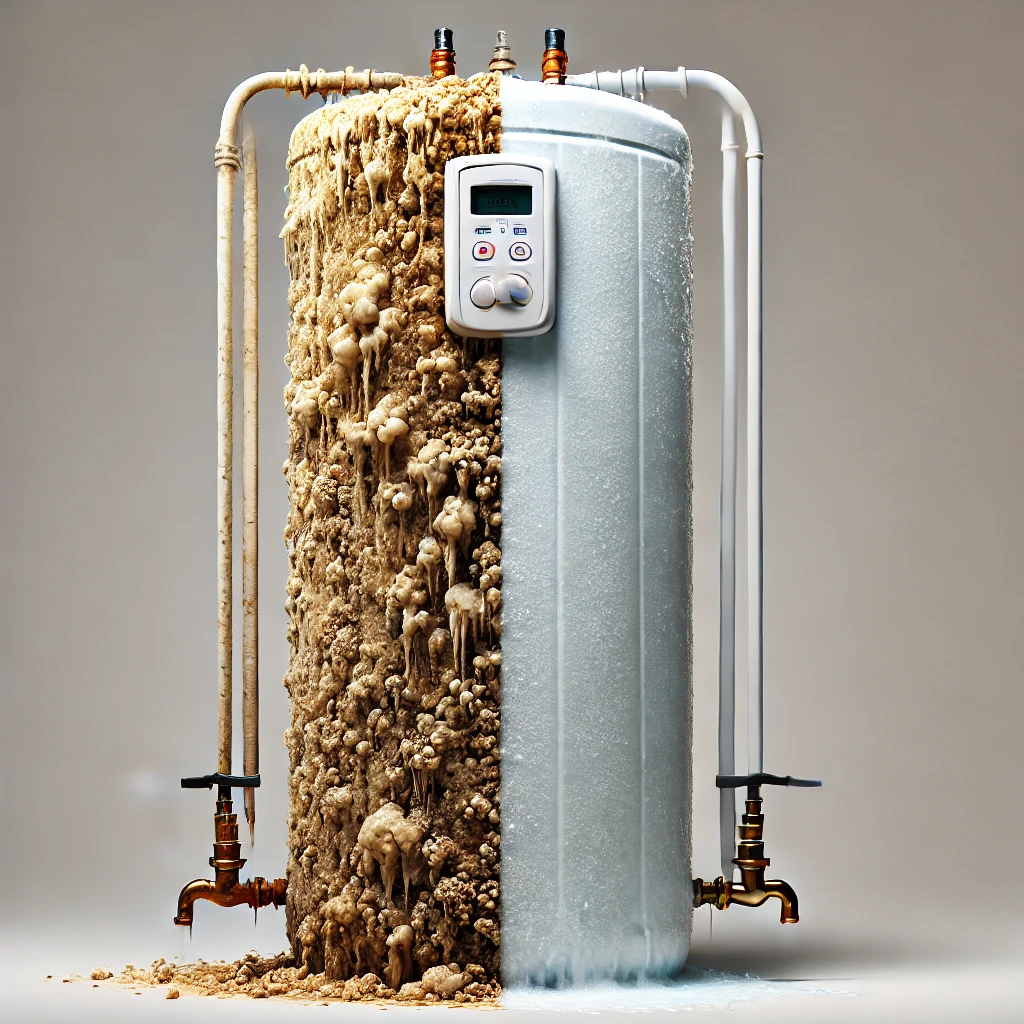
2. Corrosive Water Conditions
Some regions in New York, particularly where groundwater is sourced from slightly acidic aquifers, may experience corrosive water conditions. This can lead to leaching of metals like lead and copper from older pipes.
- Acidic Conditions: Water with a lower pH can corrode plumbing materials over time.
- Infrastructure Vulnerability: Older buildings and systems are more prone to corrosion-related issues.
To mitigate corrosive conditions, installing an acid neutralizer can help stabilize pH and protect your plumbing.
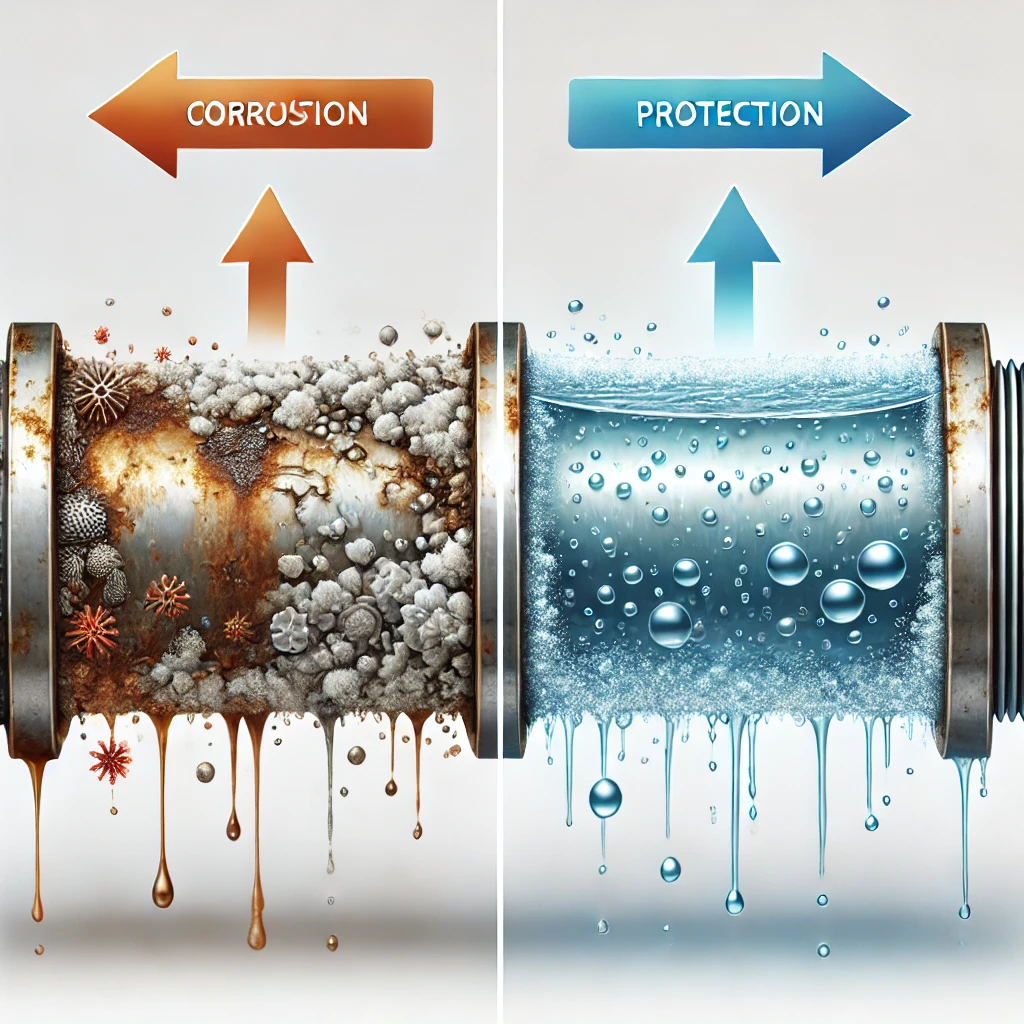
3. Impact of Regional Geology
New York's geology plays a crucial role in determining water quality. In upstate regions, sedimentary rocks and glacial deposits often contribute to higher mineral levels, while the New York City watershed is carefully managed to ensure high-quality water.
- Glacial Deposits: Upstate groundwater often contains elevated levels of minerals due to historical glaciation.
- Managed Watersheds: NYC’s water is sourced from protected areas with rigorous quality standards.
Whole house water filtration systems—whether using reverse osmosis or other advanced methods—can help manage regional variations and maintain consistent water quality throughout your home.
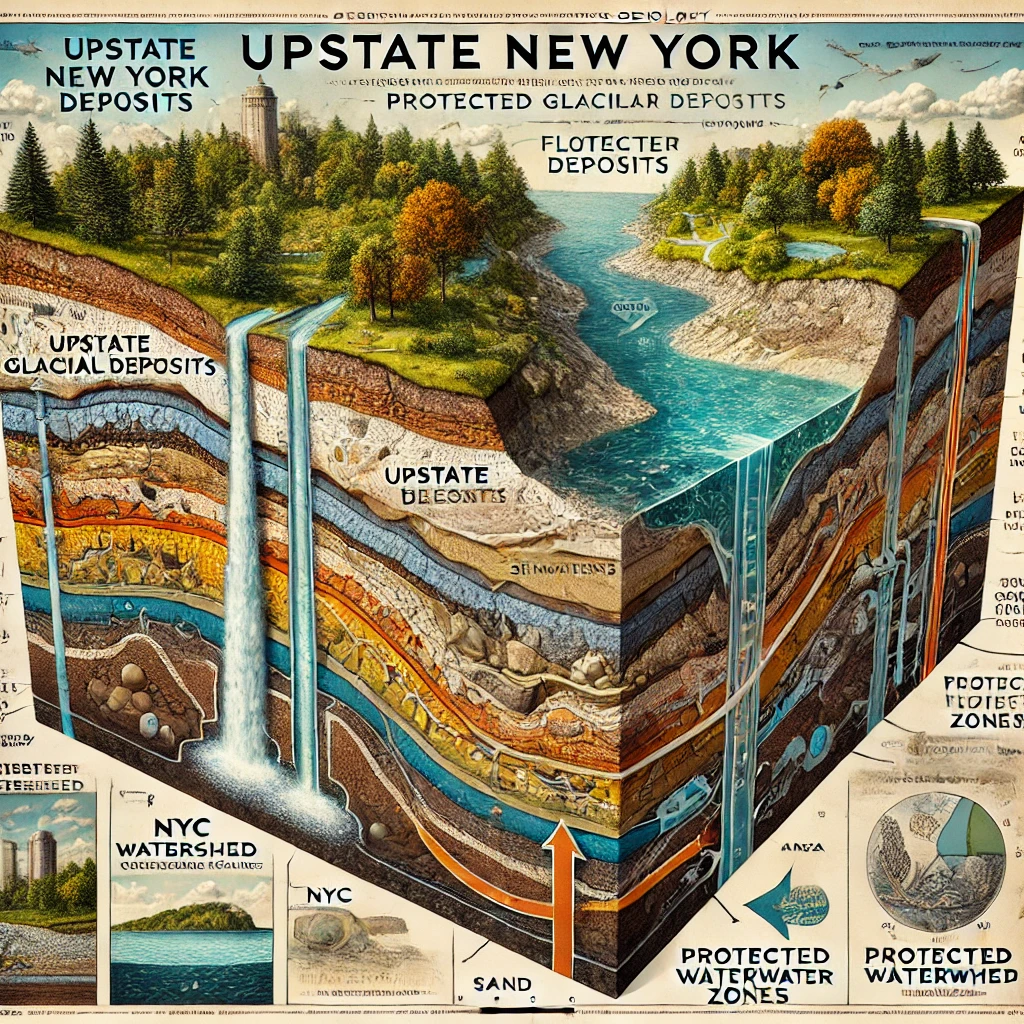
Utilizing the Water Quality Tool for New York Residents
Understanding your local water quality is essential for ensuring safe drinking water. Our Water Quality Tool enables New York residents to:
- Enter their zip code for a detailed analysis of local water sources
- View data on common contaminants in public and private water supplies
- Receive personalized recommendations for filtration systems based on your water quality challenges
Recommended Filtration Solutions for Common New York Contaminants
Based on the prevalent contaminants identified in New York’s water sources, the following filtration systems are highly recommended:
1. Activated Carbon Filters
Activated Carbon Filters effectively remove chlorine, VOCs, and some PFAs while improving taste and odor. They are ideal for municipal water supplies that undergo chlorination.
2. Reverse Osmosis Systems
Reverse Osmosis Systems offer broad-spectrum removal of nitrates, arsenic, heavy metals, and other contaminants. These systems are versatile for both under-sink and whole-house installations.
3. Whole House Water Filters
Whole House Water Filters provide comprehensive treatment, addressing issues like water hardness, corrosion, and mineral buildup throughout your home.
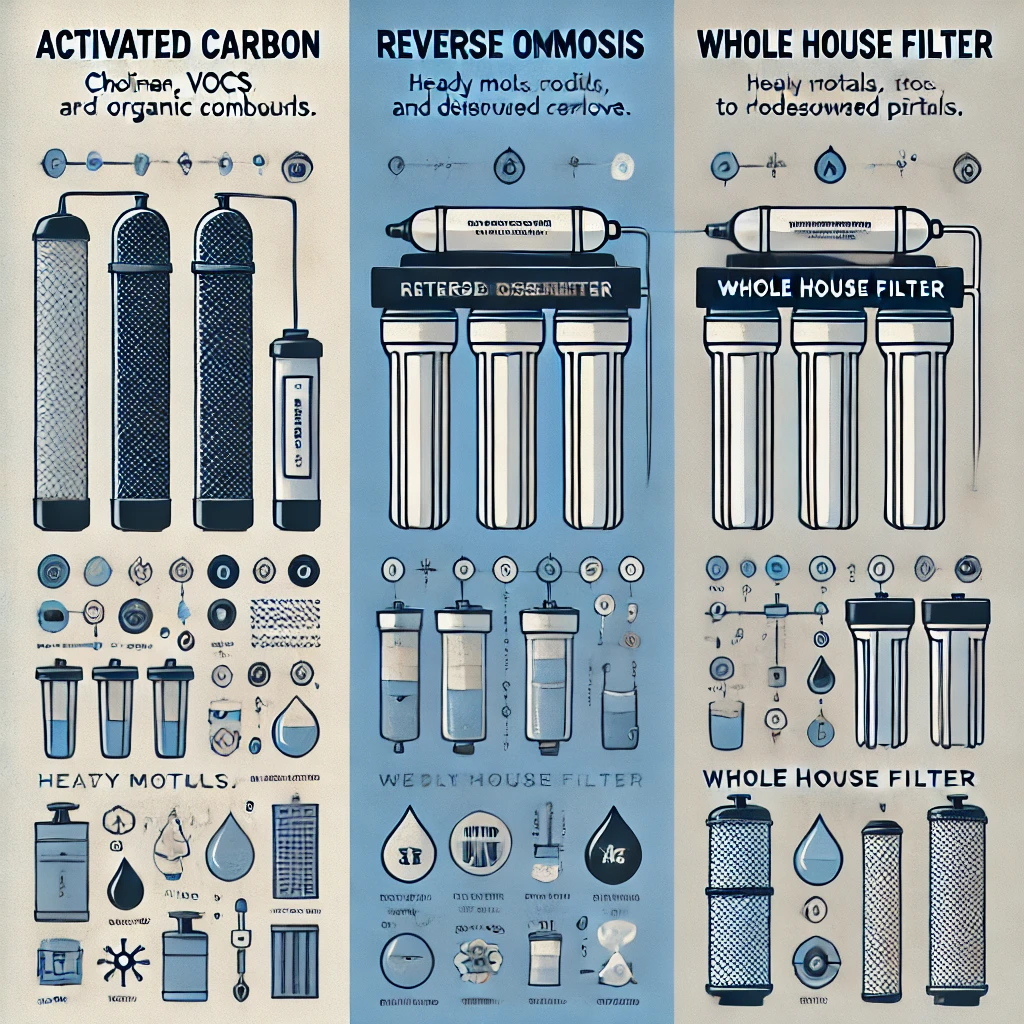
Local Water Testing Services in New York
Accurate water testing is essential to pinpoint the contaminants in your water supply. We recommend using SimpleLab for comprehensive water quality analysis. Their user-friendly kits and detailed lab reports empower you to make informed decisions about your water filtration system.
Case Studies: Addressing Water Quality Issues in New York
Real-world examples provide valuable insights into how various water quality challenges in New York are being addressed:
1. New York City: Upgrading Aging Infrastructure
New York City has invested heavily in modernizing its water infrastructure to reduce lead and copper leaching. Upgrades to treatment processes and pipe replacements have significantly improved water quality for millions of residents.
2. Upstate: Combating Agricultural Runoff
Rural areas in upstate New York are vulnerable to nitrate and pesticide runoff from agriculture. Local initiatives focusing on sustainable farming practices and advanced filtration for private wells have successfully reduced contaminant levels.
3. Long Island: Tackling PFAs and Industrial Pollutants
Long Island’s water, sourced from both groundwater and surface water, has faced challenges from industrial pollutants and PFAs. A combination of activated carbon and reverse osmosis systems has helped mitigate these issues, ensuring safer drinking water.
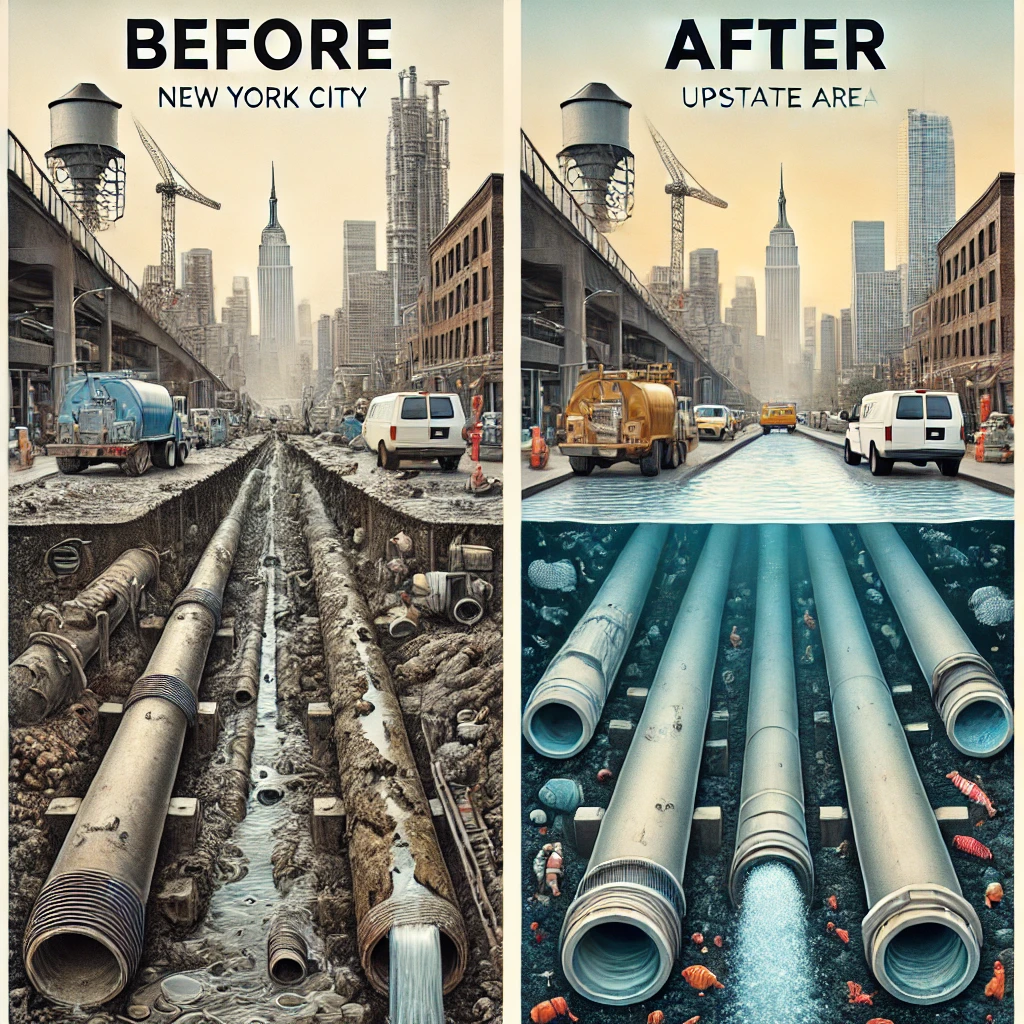
Call to Action
New York State's diverse water sources—from the protected watersheds supplying New York City to the varied aquifers upstate—demand proactive water quality management. Understanding your local water challenges and implementing effective filtration solutions is essential for safeguarding your household's health.
Start by entering your zip code into our Water Quality Tool for a detailed analysis of your water supply. Then, explore our filter review articles to find the most effective system for your needs. Finally, confirm your water's safety with comprehensive water testing services to ensure you have the clean, safe water your home deserves.
